5 design tips to steal from Dowsing & Reynolds' sensory-friendly kitchen

The kitchen, with all of its sensory triggers (from dirty plates to loud noises) can easily become particularly overwhelming. Interiors experts and Dowsing & Reynolds co-founders, Ally and James Dowsing-Reynolds, have recently created their very own sensory-friendly kitchen. Both Ally and James are neurodivergent, meaning they could helpfully collaborate with Magnet to create a sensory-friendly kitchen for their home that provided a calm and welcoming space for them both to live, dine and work in.
For a neurodiverse person, the home can be an important sanctuary within which to escape from the intense, outside world. And because of this, it can feel vital to create – if possible – a space which is both soothing and stimulating in a way that works for individuals.
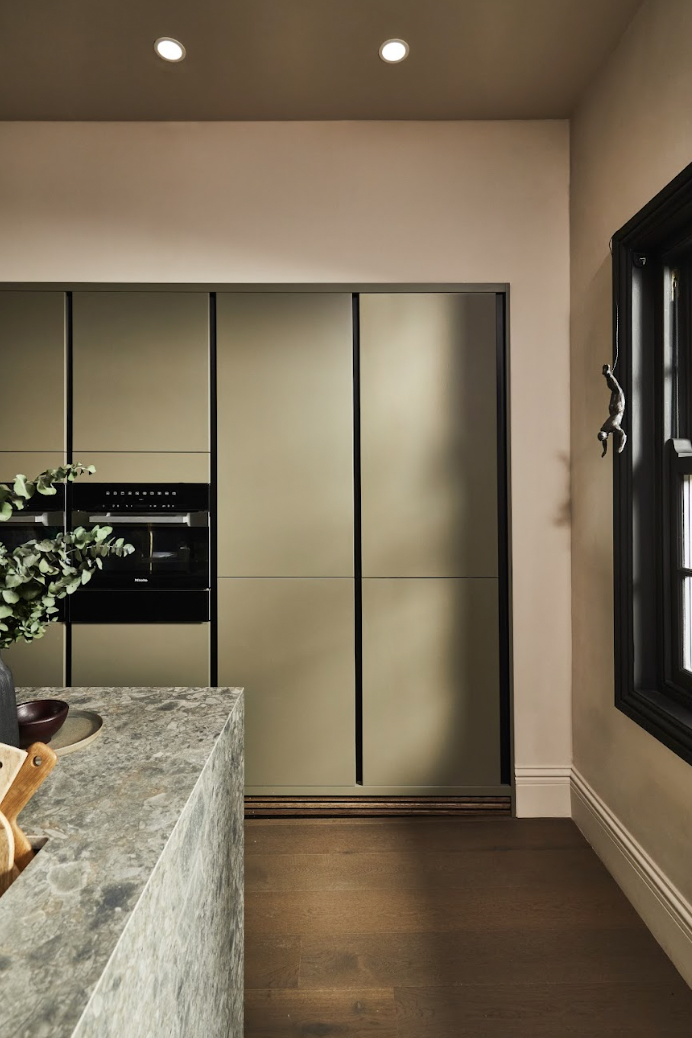
Here are some design tips to help you create your own sensory kitchen space...
1. Balance patterns with clean lines and neutrality
'Elements such as patterns can be very overstimulating for those with neurodiverse minds, yet we still require an element of stimulation – so it’s all about finding the right balance,' explains Ally.
In Ally and James’ kitchen, Jen Nash, Magnet's head of design, endeavoured to create a modern and stylish look by using the same style of cabinets throughout for consistency, all while incorporating an eye-catching island (blue-grey Dekton in Ceppo) for interest. The original features of the home were also embraced, such as the exposed brickwork.
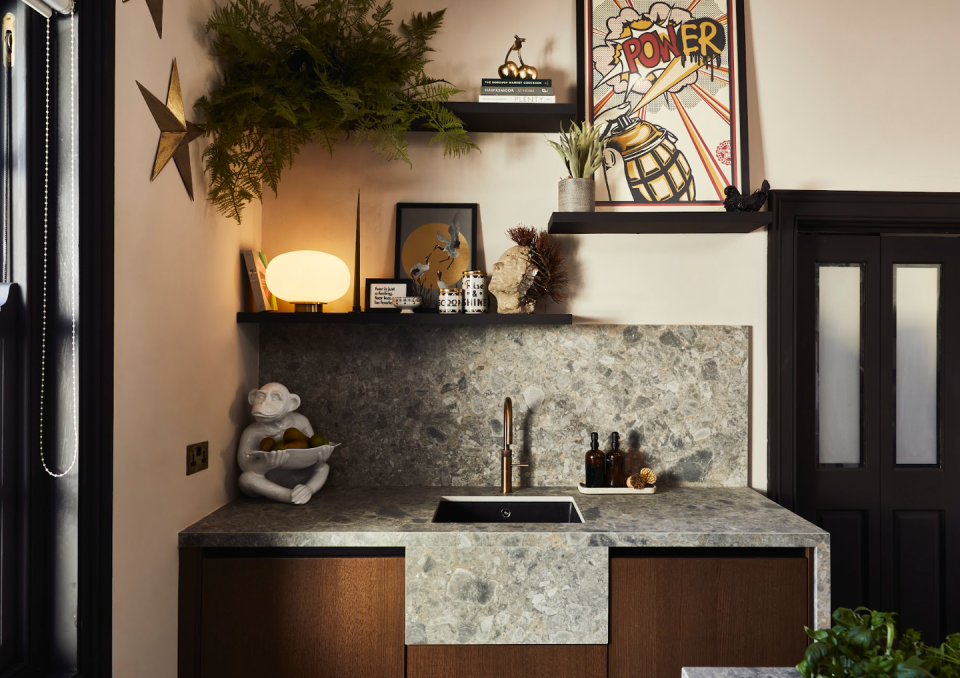
2. Use plenty of natural elements
It can be a good idea to embrace and engage in more natural design features to help soothe neurodivergent minds. For example, in Ally and James' kitchen, dark oak cabinetry and wood flooring combines with a more modern, lighter stone, which feels natural, flows well, and looks incredibly chic.
'Not only do both textures dial up the haptics in the room, but they also react with the natural light, allowing it to play across the space throughout the day to truly engage the senses,' says Jen.
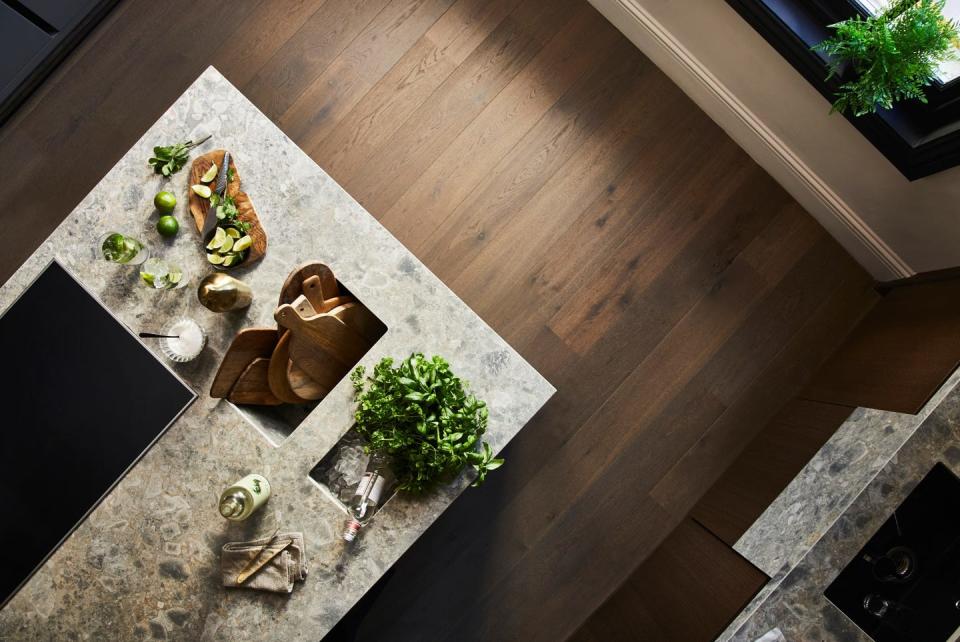
The use of limestone paint and wooden and ceramic materials bring the outside world in, as well as faux foliage and soft green cabinets. 'The foliage promotes tranquillity – ideal for those with neurodiversity who are looking to create a feeling of relaxation within their living space,' adds Jen.
Kirsten Smith, owner of Kirsten Smith, The Kitchen Designer agrees that tactile finishes are essential in a kitchen that neurodivergent people will use often. She tells House Beautiful: 'Smooth slab doors are best for easy to clean doors, and for a more tactile, calming feel. However, the most appropriate style and finish of the doors could differ from person to person, depending on what they like.'
3. Rethink how you store your essentials
For people who are neurodivergent, traditional kitchen storage systems may not often be helpful. 'People with ADHD often want clean environments, but in turn can easily forget items once stored away, making finding the right storage solutions essential,' says Ally.
So ensure you store kitchen items in a way that makes sense to you – it doesn’t need to be a one-size-fits-all!
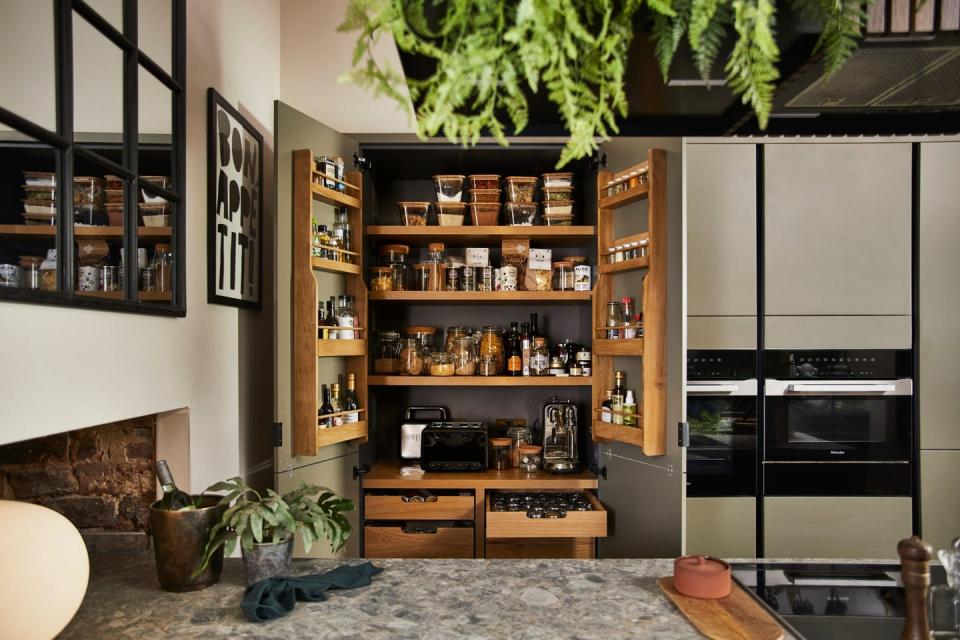
'For neurodiverse people, lots of open shelving or pullout mechanisms can be helpful, so that everything is visible, but not all out on the worktop – as clutter can be seriously overstimulating, and not just for the neurodiverse among us,' explains Kirsten.
In James and Ally's kitchen, Jen reduced the likelihood of things being lost in deep cupboards by adding shallow drawers and a butler's larder, which she explains, 'provides storage where everything can be neatly stowed, whilst also seen at a glance when opened'.
It's a design feature that Ally approves of. 'I never thought I’d keep mugs in a drawer, but it's now something I’d never change,' she says.
4. Choose a layout that suits your needs – not everyone else's
Most kitchens in UK homes are designed according to the ‘kitchen work triangle’ theory created in the 1940s, which suggests that the three main stations in your kitchen – the sink, the fridge, and the cooker – should loosely be arranged in a triangle shape to ensure easy access to these regularly-used, key spots.
However, for those who are neurodiverse, this type of layout may not make sense. Therefore, it's vital to plan your kitchen layout in a way that feels most logical to you.
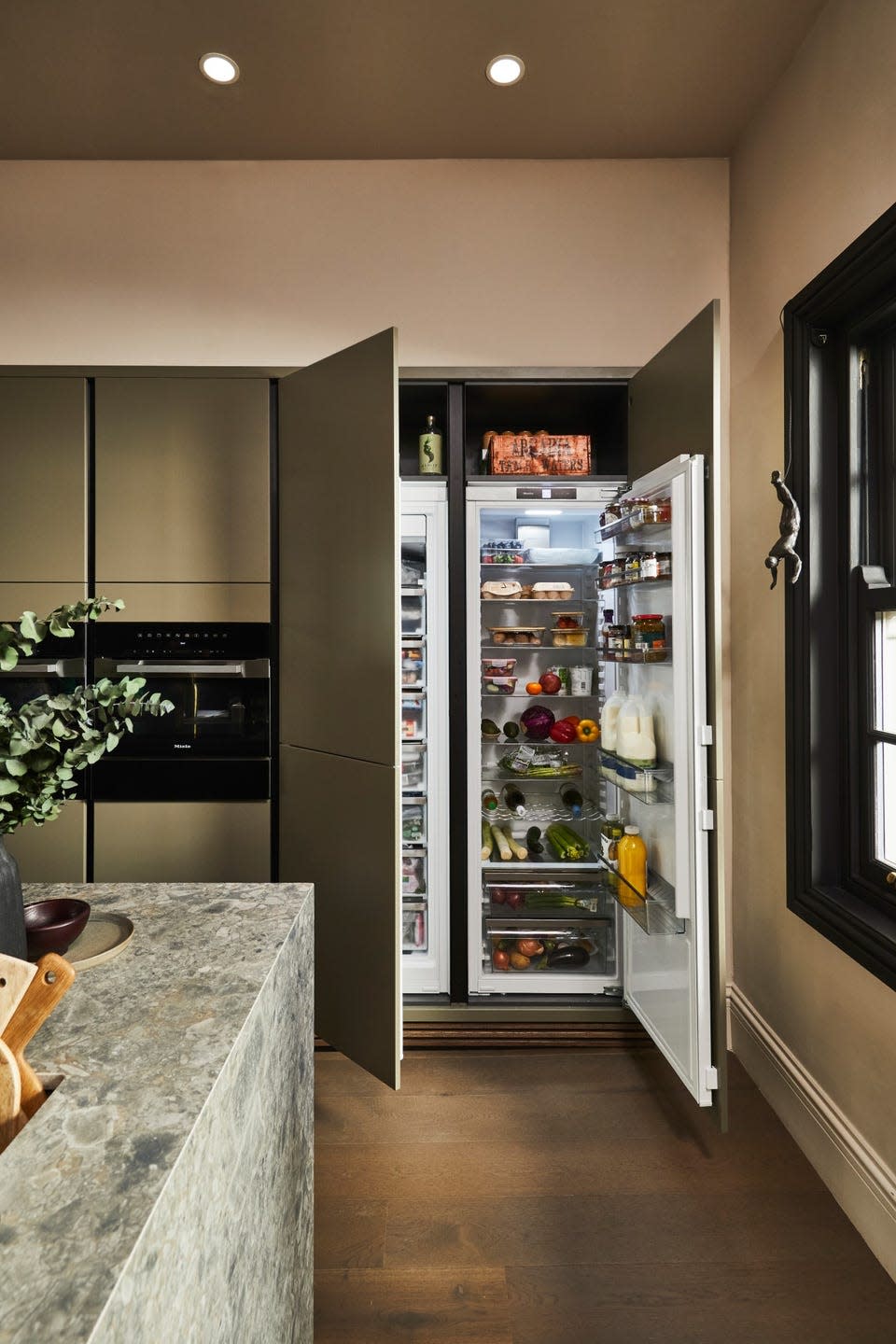
In this kitchen, the main storage was relocated to the back of the room – allowing the focus to fall on the wraparound worktop, kitchen island and centrally located hob facing the breakfast bar, which was added to allow their kitchen to become a central hub for family life, work, cooking and socialising.
Kirsten also suggests that moving noisy appliances out of the kitchen could be valuable, if if possible. 'To minimise feelings of over-stimulation, I would look for the quietest appliances available – such as dishwashers with low DBs. You may also want to move a washing machine and tumble dryer to a separate utility room if possible.'
5. Have various levels and layers of lighting
People who are neurodiverse can grapple with traditional overhead kitchen lighting, with some experiencing hypersensitivity to overly bright, harsh lights. So it can instead be useful to layer your lighting, to make it softer and less over-stimulating.
Kirsten says: 'A good balance of task lighting and mood lighting can be ideal – however both sets need to be dimmable. And if possible, having the option for the lights to be warmer or colder in colour can be ideal, as colour can drastically alter someone's mood/energy and desire to carry out a task in the kitchen.'
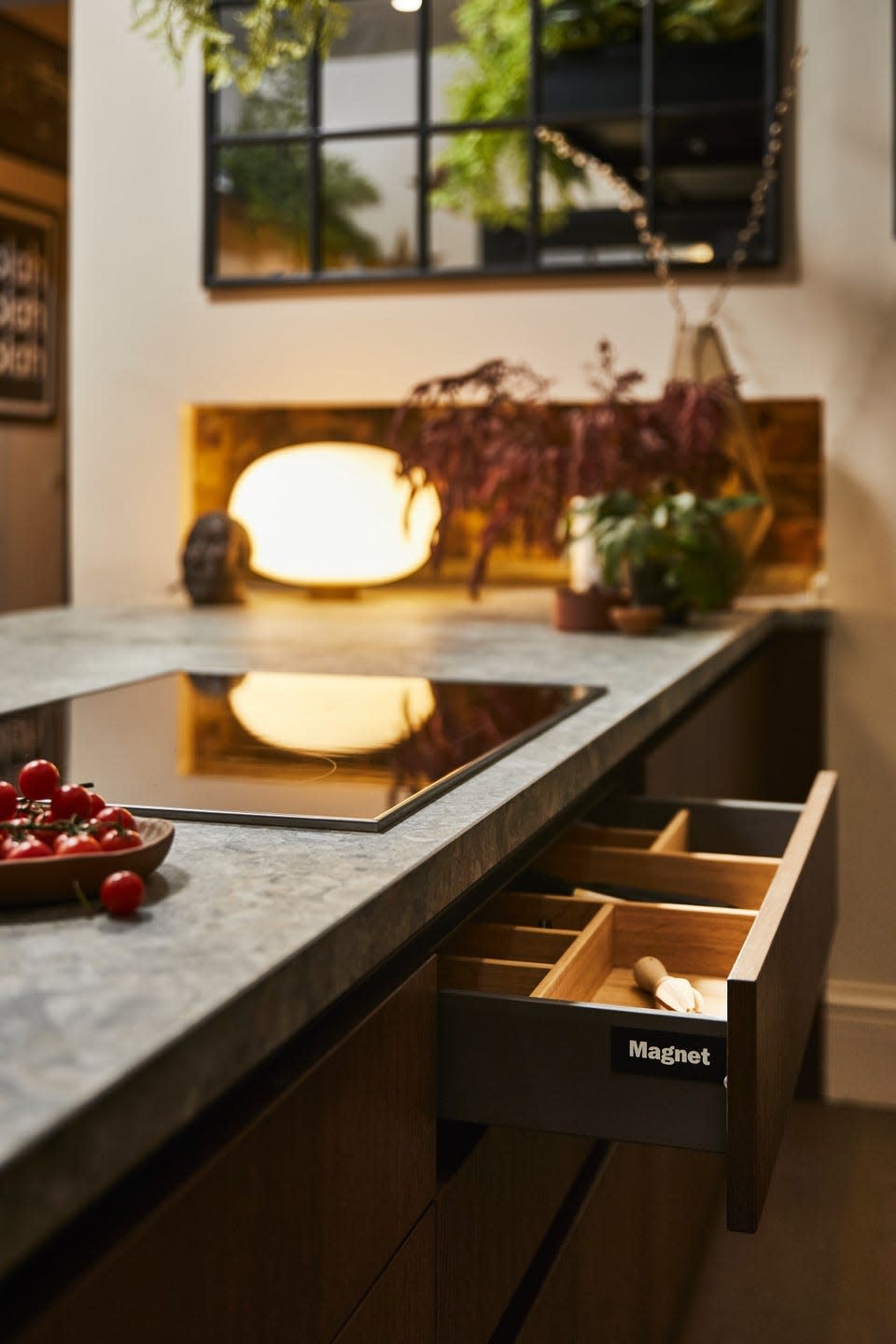
James and Ally chose their very own Waldorf Pebble table lamps from Dowsing & Reynolds for a soft illumination of the space, and central dimmer switches were also installed, ensuring complete control over the room lighting at different points in the day, and for different purposes.
Follow House Beautiful on TikTok and Instagram.
You Might Also Like



